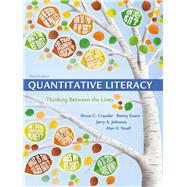Learn to use everyday data to make intelligent and informed decisions relevant to your own life in areas such as finances, politics, health issues, and more as Quantitative Literacy: Thinking Between the Lines builds esential critical and problem soliving skills.








